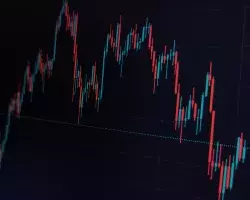Trade Management Essentials: Maximize Profits and Control Risks with Proven Strategies
Are you effectively managing your trades, or leaving profits on the table? Many traders focus on finding the right entry points but overlook a crucial element that can make or break their success: trade management. Trade management refers to the strategic approach to handling open trades to maximize profits and control risks. This involves setting appropriate Stop Loss and Take Profit levels, monitoring positions, and making adjustments as market conditions change.
Trading Performance: Key Factors That Can Make or Break Your Success
When it comes to trading, performance isn’t just about making a profit – it’s about maintaining consistency, managing risks, and continuously improving. Trading performance refers to the overall effectiveness of a trader’s actions in the market, measured by factors like returns, risk levels, and adherence to a trading plan. But did you know that over 70% of traders struggle to maintain consistent trading performance?
Timing Your Profit-Taking: Strategies for Securing Gains and Reducing Risk
When is the right time to lock in your profits? For many traders, timing profit-taking is often the most challenging yet vital aspect of a trading strategy. A well-timed exit can make the difference between preserving gains and watching them evaporate in the face of a volatile market. Studies have shown that traders who employ structured profit-taking strategies consistently outperform those who rely solely on intuition, as it helps to prevent overexposure and minimizes emotional decision-making. But why is profit-taking so essential?
Chasing Losses: The Dangerous Trap Every Trader Should Avoid
Chasing losses is one of the most common psychological traps traders fall into, especially after experiencing a string of losing trades. In an attempt to recover lost funds, traders often find themselves acting impulsively, making trades that go against their strategy, risk management rules, and market analysis. This cycle of trying to “get back to even” can quickly escalate into even greater losses, putting both short-term gains and long-term success at serious risk.
Effective Ways to Assess and Control Risk Exposure in Your Portfolio
Are you aware that nearly 80% of new traders face significant losses within their first few months of trading? One of the primary reasons is inadequate risk management. This statistic underscores the critical importance of understanding and managing risk exposure in trading. Risk exposure refers to the potential losses that a trader may face due to changes in the market, and it’s a core concept in trading risk management. Whether you’re trading stocks, forex, or commodities, understanding your risk exposure can make the difference between consistent growth and substantial losses.
How to Use Financial Performance Metrics to Make Smarter Stock Market Investments
Have you ever wondered why some investors consistently succeed in the stock market while others struggle to break even? The answer often lies in one critical skill: understanding financial performance. Research shows that a staggering 75% of investors fail because they overlook fundamental analysis, focusing instead on short-term trends. For beginners, mastering financial metrics like revenue growth, profit margins, and return on equity (ROE) isn’t just important - it’s essential for making informed decisions and avoiding costly mistakes.
Top Mistakes Traders Commonly Make in Technical Analysis: Avoid These Pitfalls for Better Trading Strategy
Did you know that over 70% of traders make the same common mistakes when using technical analysis?
How to Build an Investing Portfolio: A Step-by-Step Guide for Success
Building an investment portfolio is one of the most effective ways to secure your financial future. Whether you're saving for retirement, planning for a major life milestone, or simply growing your wealth, a well-constructed portfolio can help you achieve your goals. By carefully selecting and managing assets, you can outpace inflation and build long-term financial stability.
High-Risk Investments vs. Low-Risk Investments: Finding the Right Balance
Did you know that over 90% of new traders lose money due to improper risk management? Balancing risk is a cornerstone of financial success, whether you're an active trader or a long-term investor. Managing risk isn’t just about avoiding losses - it's about positioning yourself for consistent, sustainable growth.
Trading Success Through Adaptability: Embracing Flexibility in Your Strategy
Did you know that approximately 70% of traders attribute their success to their ability to adapt to changing market conditions? In a fast-paced trading environment, flexibility can often be the difference between a profitable trade and a costly mistake.









